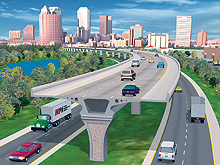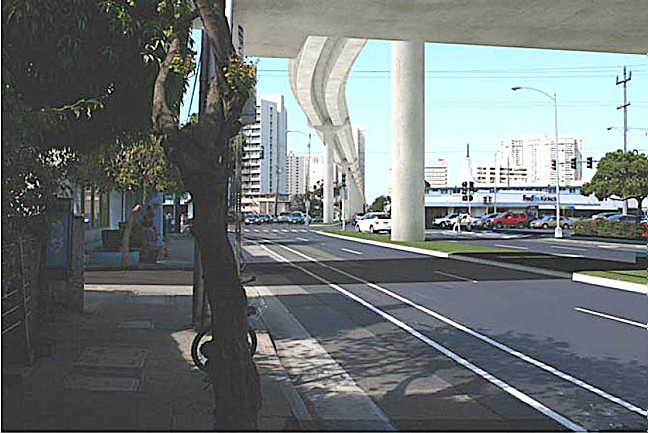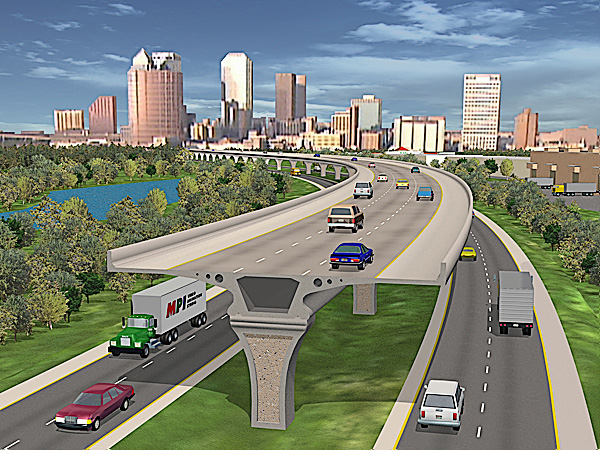
honolulutraffic.com
Offering cost-effective ways to reduce traffic congestion in Honolulu
[You can click on the underlined phrases for third party confirmation of the statements made. A version of this paper suitable for printing on one page, front and back, is available at www.honolulutraffic.com/HandoutCC.pdf ]
The case against rail and more
taxes
Congestion: The City forecasts that while we are already 15 percent over capacity on H-1 during the rush hour, we will be 81 percent over capacity in 2030 with rail. Think of it another way: The City does not plan to widen the H-1 freeway but has plans to build 60,000 new homes in the Ewa Plain. What else could there be but massive increases in traffic congestion?
This may astonish most people since their assumption has
been that rail was all about reducing traffic congestion. However, the bald
fact is that city planners and elected officials have had no intention of
reducing traffic congestion and never did. They have been conducting a war
against the automobile, which is why traffic congestion is so
bad now. Follow the
money campaign
contributions.
Cost:
The City forecasts (AA,
table 5-1) that to build their preferred 28-mile full alignment from
Kapolei to UH, it will cost $4.6 billion. We have calculated that it
will actually cost $6.4 billion and possibly more. In addition the
operating losses will be another $90 million a year. This will be far greater
per capita of population than any other metro area in the
More Taxes: The Mayor originally forecast that it would cost $2.6 billion to build rail and said he needed a one per cent hike in the General Excise tax to build it, but the Legislature only authorized a half percent. Now his forecast has nearly doubled to $4.6 billion (our is even higher). We calculate it will take a 40 percent hike in property taxes to build and operate the full alignment. Do not focus on the shorter, East Kapolei to Ala Moana Center, version. There has never been a case in U.S. transit history where a shorter version was built and rest was not. Focus on the cost of the full version.


The
case for HOT lanes the tax-free alternative
Congestion: We
propose a two-lane reversible, elevated highway operated as a
High-Occupancy/Toll facility (HOT lanes). Buses/Rapid Transit (BRT) and
Vanpools would go free and have priority; all other would pay a toll variable by
time of day. Surprisingly, the idea of paying tolls on new HOT lanes is quite
popular with local residents.
The
function of the variable toll is to keep the HOT lanes traffic full, but
congestion free. When operated this way the throughput of vehicle traffic on
one of the HOT lanes will be
twice as much per hour as a nearby regular H-1 lane.
This means
that the two HOT lanes will carry as much as four lanes of the regular H-1
freeway, which will result in significant traffic congestion relief. It means
that those who never pay to use the HOT lanes will be the greatest
beneficiaries; if they drive on the regular H-1 lanes they will get significant
congestion relief, if they commute by bus they will get congestion-free travel,
and, in any case, they will pay no extra taxes.
Cost:
The city forecasts a cost for the HOT lanes of $2.7
billion (AA,
table 5-1). However, the almost identical facility in
Environment
/Blight: The elevated toll lanes will run along
For a pdf copy of this paper for printing purposes, click HERE